Intro
Enter the 3rd trimester of pregnancy, a critical phase of fetal growth, pregnancy symptoms, and preparation for childbirth, marked by significant physical changes, emotional shifts, and essential prenatal care.
The 3rd trimester of pregnancy is a critical period of fetal growth and development, marking the final stretch before the arrival of the baby. This period, which typically spans from week 28 to birth, is characterized by significant physical and emotional changes for the mother. As the due date approaches, expectant mothers often experience a mix of excitement, anxiety, and anticipation. Understanding the physical and emotional transformations that occur during this period can help pregnant women navigate the challenges and joys of the 3rd trimester.
As the baby grows and develops, the mother's body undergoes significant changes to accommodate the increasing size of the fetus. The 3rd trimester is a time of rapid fetal growth, with the baby gaining approximately half of its birth weight during this period. This rapid growth can lead to increased discomfort and fatigue for the mother, as the expanding uterus puts pressure on surrounding organs and tissues. Despite these challenges, the 3rd trimester is also a time of great excitement and anticipation, as the mother prepares to meet her baby and start a new chapter in her life.
The physical and emotional changes that occur during the 3rd trimester can be overwhelming, but with the right support and guidance, expectant mothers can navigate this period with confidence. From managing discomfort and pain to preparing for childbirth and parenthood, there are many aspects of the 3rd trimester that require attention and care. By understanding the benefits, working mechanisms, and key information related to this period, pregnant women can take control of their health and well-being, setting themselves up for a positive and empowering experience.
Physical Changes During the 3rd Trimester
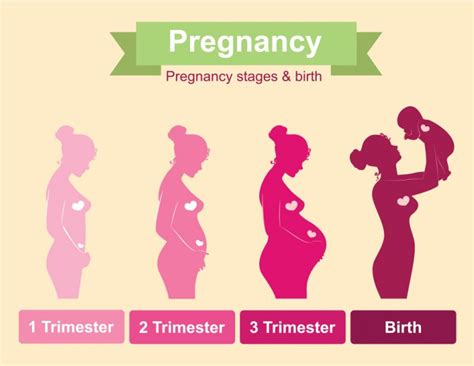
- Weight gain: The average weight gain during the 3rd trimester is approximately 10-12 pounds, although this can vary depending on individual factors.
- Back pain: The expanding uterus can put pressure on the back muscles, leading to discomfort and pain.
- Breast tenderness: Hormonal changes can cause breast tenderness and swelling, as the body prepares for milk production.
- Fatigue: The physical demands of pregnancy can lead to increased fatigue and exhaustion.
- Braxton Hicks contractions: Mild contractions that prepare the uterus for labor and childbirth.
Managing Physical Discomfort
Managing physical discomfort during the 3rd trimester requires a range of strategies, including:- Exercise: Gentle exercises, such as prenatal yoga or swimming, can help alleviate back pain and improve overall physical comfort.
- Rest: Getting plenty of rest and taking regular breaks can help manage fatigue and exhaustion.
- Nutrition: Eating a balanced diet that includes plenty of fruits, vegetables, and whole grains can help support physical health and well-being.
- Comfort measures: Using comfort measures, such as heat or cold packs, can help alleviate back pain and discomfort.
Emotional Changes During the 3rd Trimester
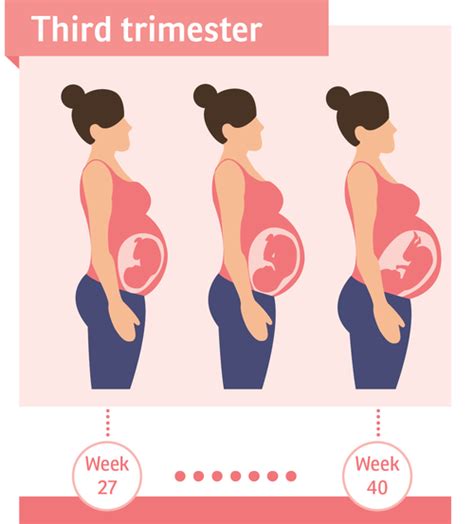
- Anxiety: Concerns about childbirth, parenting, and the future can lead to increased anxiety and worry.
- Excitement: The anticipation of meeting the baby and starting a new family can be a source of great excitement and joy.
- Mood swings: Hormonal changes can lead to mood swings and emotional instability.
- Fear: Fears about childbirth, parenting, and the unknown can be overwhelming and challenging to manage.
Managing Emotional Changes
Managing emotional changes during the 3rd trimester requires a range of strategies, including:- Support: Building a support network of family, friends, and healthcare providers can help alleviate anxiety and worry.
- Education: Learning about childbirth, parenting, and infant care can help build confidence and reduce fear.
- Self-care: Engaging in self-care activities, such as meditation or yoga, can help manage stress and emotional instability.
- Communication: Open communication with partners, family, and friends can help build emotional support and connection.
Preparing for Childbirth and Parenthood
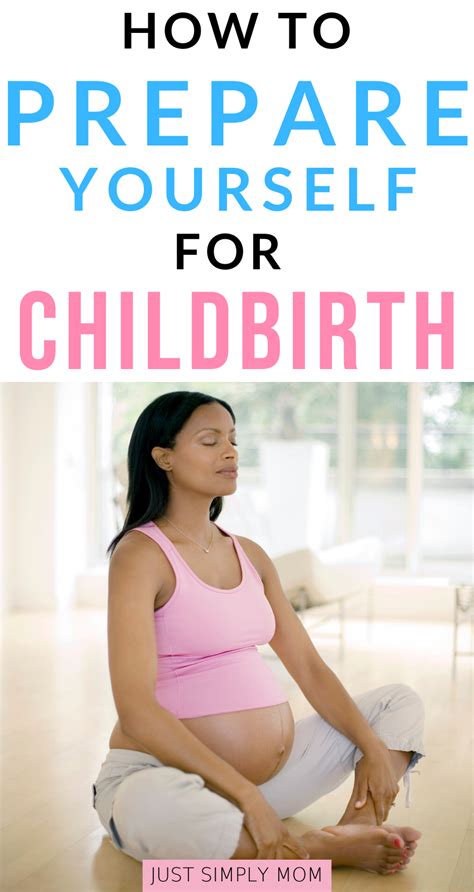
- Childbirth education: Learning about the childbirth process, including labor, delivery, and postpartum care.
- Parenting classes: Learning about infant care, including feeding, bathing, and soothing.
- Building a support network: Building a network of family, friends, and healthcare providers to support the transition to parenthood.
- Preparing the home: Preparing the home for the arrival of the baby, including setting up the nursery and purchasing essential equipment.
Benefits of Preparation
Preparing for childbirth and parenthood has numerous benefits, including:- Increased confidence: Feeling more confident and prepared for the challenges of parenthood.
- Reduced anxiety: Reducing anxiety and worry about the unknown.
- Improved relationships: Building stronger relationships with partners, family, and friends.
- Better outcomes: Improving health outcomes for both mother and baby.
Staying Healthy During the 3rd Trimester

- Prenatal care: Regular prenatal check-ups with healthcare providers to monitor fetal growth and development.
- Nutrition: Eating a balanced diet that includes plenty of fruits, vegetables, and whole grains.
- Exercise: Engaging in gentle exercises, such as prenatal yoga or swimming, to improve physical comfort and reduce stress.
- Rest: Getting plenty of rest and taking regular breaks to manage fatigue and exhaustion.
Importance of Prenatal Care
Prenatal care is essential for monitoring fetal growth and development, as well as identifying any potential complications or concerns. Regular prenatal check-ups can help:- Monitor fetal growth: Tracking fetal growth and development to ensure the baby is healthy and thriving.
- Identify potential complications: Identifying any potential complications or concerns, such as gestational diabetes or preeclampsia.
- Provide emotional support: Providing emotional support and reassurance to expectant mothers.
Common Concerns During the 3rd Trimester
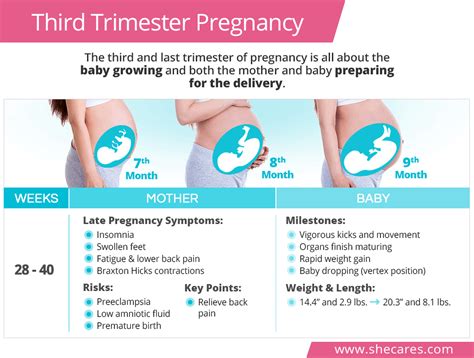
- Back pain: Managing back pain and discomfort.
- Breast tenderness: Managing breast tenderness and swelling.
- Fatigue: Managing fatigue and exhaustion.
- Anxiety: Managing anxiety and worry about childbirth and parenthood.
Addressing Concerns
Addressing concerns during the 3rd trimester requires a range of strategies, including:- Open communication: Open communication with healthcare providers and partners about concerns and worries.
- Education: Learning about childbirth, parenting, and infant care to build confidence and reduce fear.
- Support: Building a support network of family, friends, and healthcare providers to provide emotional support and reassurance.
- Self-care: Engaging in self-care activities, such as meditation or yoga, to manage stress and emotional instability.
Conclusion and Next Steps
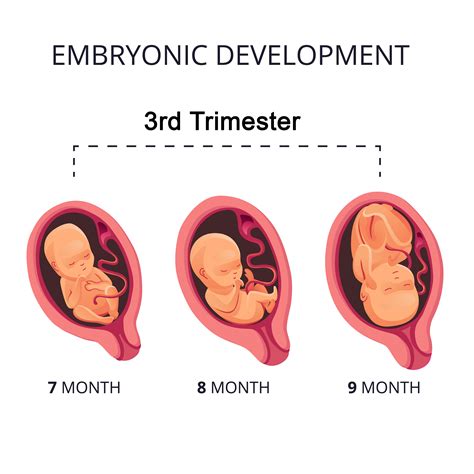
We invite you to share your thoughts, questions, and concerns about the 3rd trimester in the comments below. Whether you're an expectant mother or a healthcare provider, your insights and experiences can help others navigate this critical period of pregnancy. Let's work together to build a supportive community that promotes healthy pregnancies and happy families.
What are the most common physical symptoms during the 3rd trimester?
+The most common physical symptoms during the 3rd trimester include back pain, breast tenderness, fatigue, and Braxton Hicks contractions.
How can I manage emotional changes during the 3rd trimester?
+Managing emotional changes during the 3rd trimester requires a range of strategies, including building a support network, engaging in self-care activities, and prioritizing open communication with partners and healthcare providers.
What are the benefits of preparing for childbirth and parenthood during the 3rd trimester?
+Preparing for childbirth and parenthood during the 3rd trimester has numerous benefits, including increased confidence, reduced anxiety, and improved relationships with partners, family, and friends.
